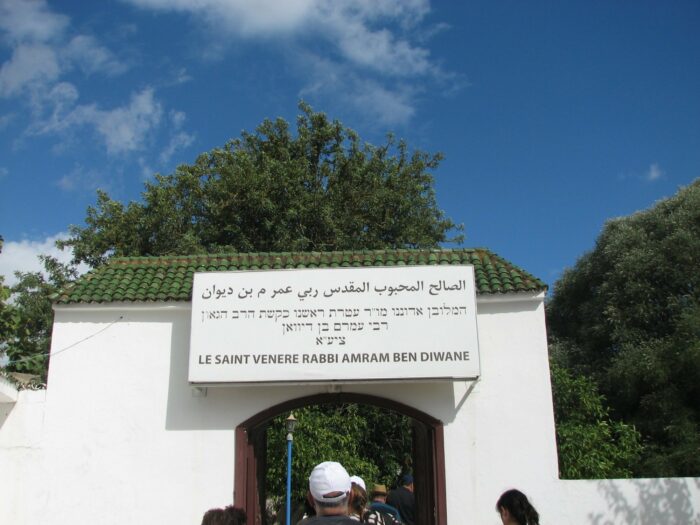One of Morocco’s major Jewish shrines is that of Rabbi Amram ben Diwane in Azjèn, near Ouezzane.
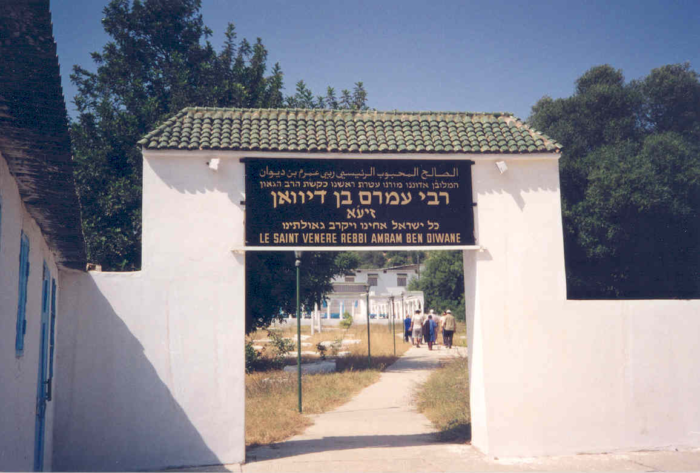
The veneration of saints, often at shrines consisting of cemeteries and mausolea, is a trait which Morocco’s Muslims and Jews share. Regardless of whether they are dedicated to a Muslim or a Jewish saint, many of Morocco’s shrines have attracted members of both faiths alike.
The shrine of Rabbi Amram ben Diwane is one of Morocco’s major Jewish shrines. It is located in the village of Azjèn (sometimes spelled Asjèn), about 6 kilometers north-west of the Sufi town of Ouezzane (or Wazzân, subject of my next post). A paved road leads from Ouezzane directly to the shrine.
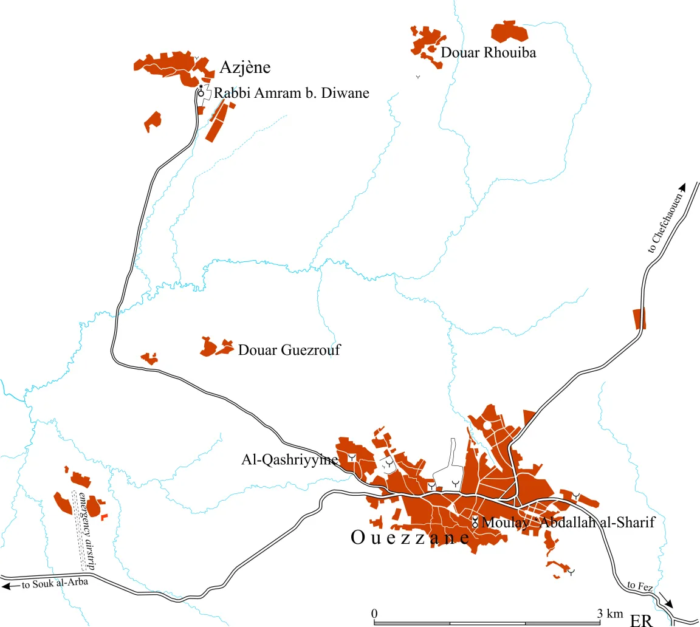
The Ouezzane area, in the foothills of the Jbala Mountains, is a fine example of the type of rolling pied-de-mont landscape (called dîr in Moroccan Arabic) Fernand Braudel claimed lay at the heart of Mediterranean civilization. It exhibits a familiar mix of dry cereal farming, irrigated vegetable plots and the ubiquitous olive groves—the Ouezzane area is famous for its olive oil.
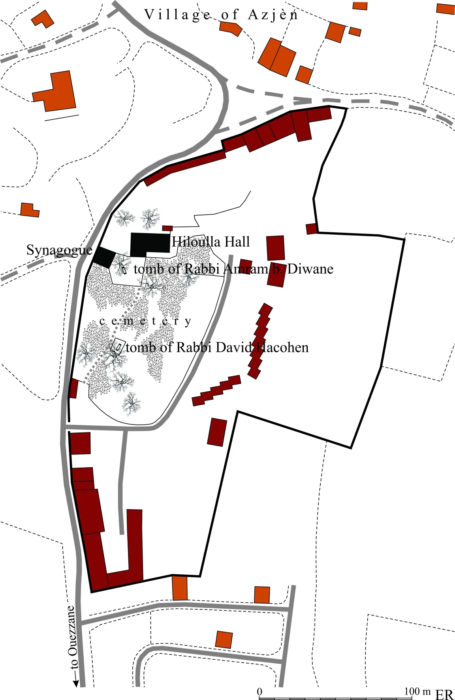
Rabbi Amram ben Diwane (d. 1781) arrived in Morocco in 1743 from Ottoman Palestine. He was sent to Morocco by the rabbis of Hebron to collect funds for their yeshivot. The rabbis of Fez and Sefrou embraced him because of his erudition. He toured Morocco for years, collecting funds, teaching and disseminating wisdom. Recognized as a tzadik (both erudite and pious), his reputation survived his death.
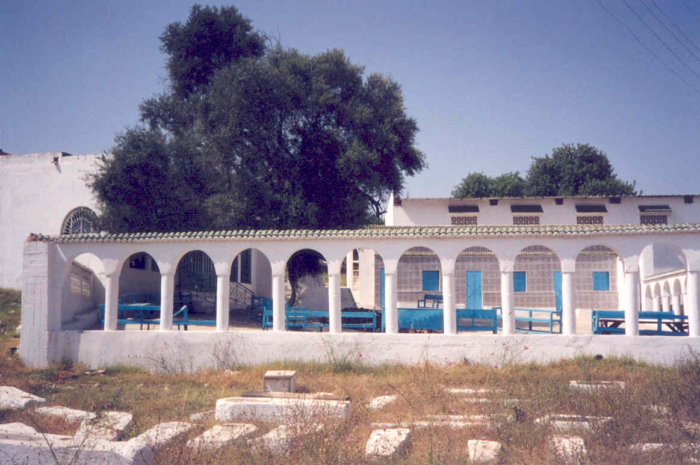
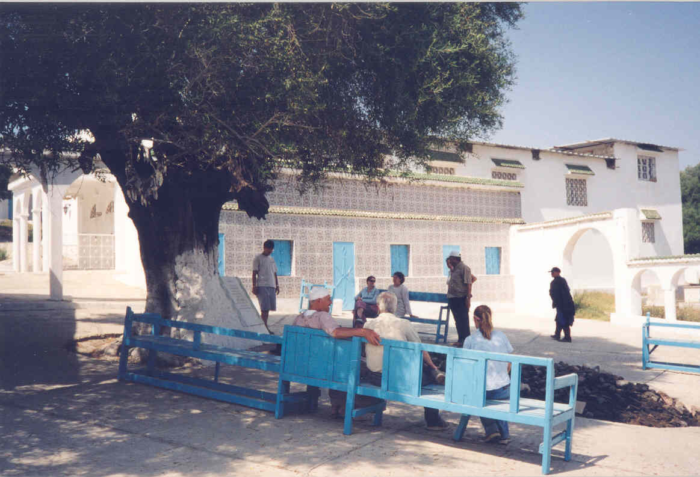
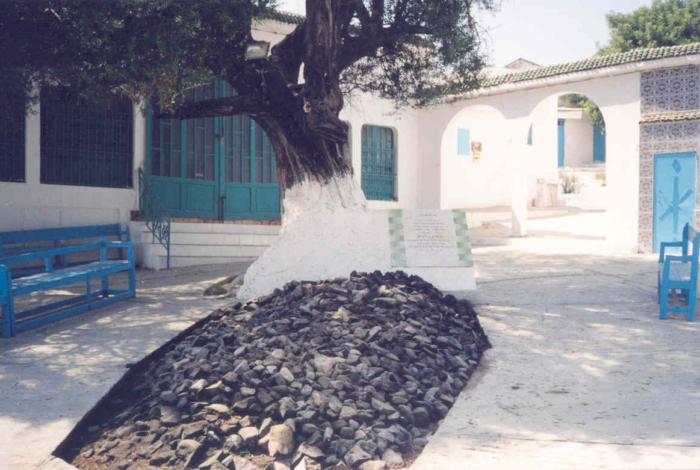
The shrine of Rabbi Amram ben Diwane consists of a cemetery graced by venerable olive trees. Both his tomb and that of the other tzadik buried there, Rabbi David Hacohen, are actually marked by olive trees. The graves consist of piles of stones at the base of these trees. Those who visit the shrine will place lit candles on the stones. When I visited the tomb of Rabbi Amram, on a Sunday afternoon in June 2002, the hot stones were still smoldering with slowly burning wax from the candles that had been burnt there on the Sabbath.
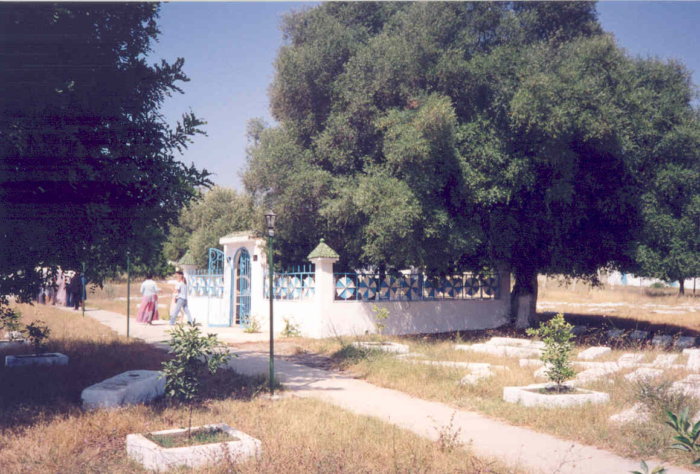
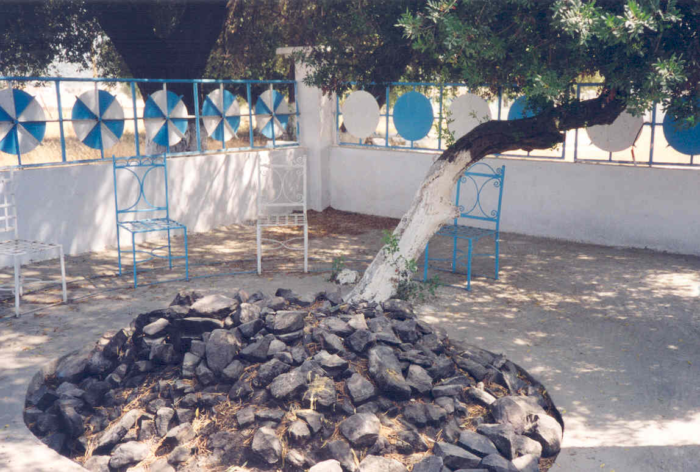
There is a synagogue next to the tomb of Rabbi Amram. Next to these again is the “hiloulla hall” (I don’t think this is what it is called. I am the one who is calling it this), where pilgrims gather to feast, sing and dance during the annual hiloulla, a North African term which designates a pilgrimage to a Jewish shrine.
Apart from the cemetery with its synagogue and hiloulla hall, the shrine has a number of hostels and camp grounds to accommodate the pilgrims, many of whom travel from as far away as France, Canada and Israel on an annual or bi-annual basis.
The satellite image below shows the shrine on October 1st 2007.
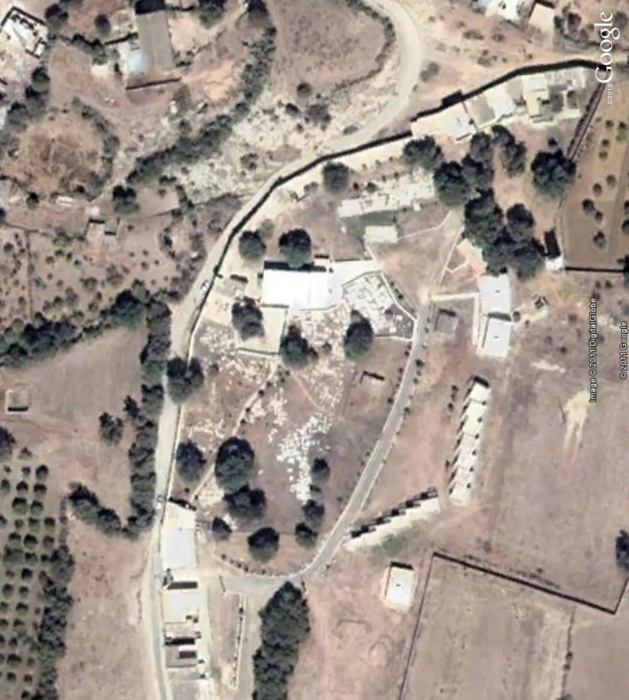
Dr. Eric Ross is a cultural and urban geographer. He was born in Ankara, Turkey, and is a Canadian citizen. He earned a M.Sc. in Geography at Université du Québec à Montréal (1990) and a Ph.D. in Islamic Studies at McGill University (1996). He is currently an Associate Professor at Al Akhawayn University in Ifrane, where he has been teaching geography and research methods courses since 1998. He has conducted research on Sufi institutions and urban processes in Senegal, and on the city of Touba in particular. He also studies cultural heritage, tourism, and urban planning in Morocco, and contributed to a multidisciplinary study of the impacts of tourism on Essaouira. His research has been published in both English and French.



